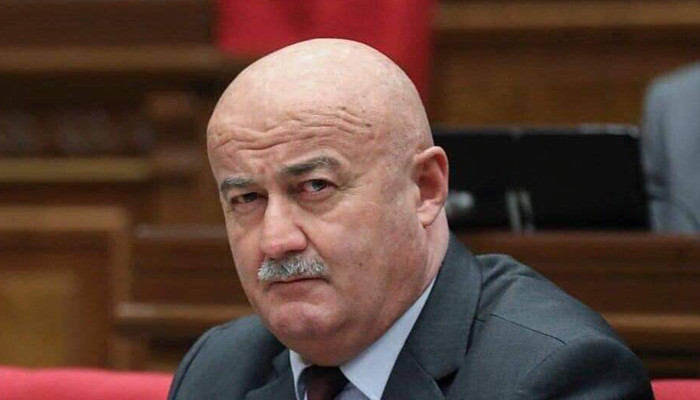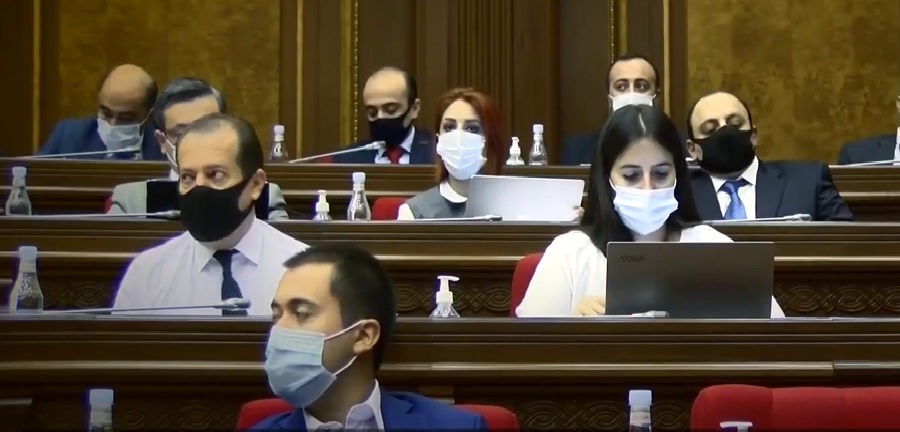 From January to May 2012 the courts did not accept any new suit against mass media whereas over the same period of the last year there were 11 such suits, and proceedings on 16 cases had continued since 2010. All the cases were based on Article 1087.1 of the RA Civil Code concerning insult and defamation. It’s worth mentioning that two such claims fixed by the CPFE this year were accepted in the end of 2011.
From January to May 2012 the courts did not accept any new suit against mass media whereas over the same period of the last year there were 11 such suits, and proceedings on 16 cases had continued since 2010. All the cases were based on Article 1087.1 of the RA Civil Code concerning insult and defamation. It’s worth mentioning that two such claims fixed by the CPFE this year were accepted in the end of 2011.
The analysis of already completed cases demonstrates remarkable trends. In particular, the number of suits against mass media and journalists significantly increased when the general jurisdiction courts satisfied the claims of the plaintiffs (in most cases these were famous politicians and/or prominent businessmen), whereas the higher instance courts rejected or returned the appeals. As a result, the respondents (i.e., the media) found themselves in a severe financial and economic situation since they had to pay compensation amounting to millions of drams.
On November 15, 2011 the Constitutional Court made its well-known ruling on Article 1087.1 of the RA Civil Code and defined the approaches to its application which might prevent or, at least, minimize partiality in rulings made by courts. If we compare the state of affairs before and after this ruling, and compare the number of such cases and trial outcomes, one may conclude that the ruling of the Constitutional Court has played a positive role.
Thus, some plaintiffs reconsidered their suits and brought them in compliance with the provisions of the Constitutional Court ruling. This, especially, concerns the financial aspects of court disputes. In particular, the village elder of Lernapat, Lori province, Vano Yegiazaryan who sued journalist Adrine Torosyan for AMD 1 million for damage compensation, replaced the claim for this amount with the symbolic 1 luma. Teresa Shahverdyan, Dean of the Pedagogical Department at Vanadzor’s Pedagogical Institute who sued the same journalist replaced the claim for damage compensation from AMD 2 million to AMD 200,000.
At the same time famous politicians who often took offence from critical publications in the media, currently abstain from hasty application to court and confine themselves to warnings to that effect (the media periodically publish such information). There were, by the way, refusals from previously filed suits. (Ara Chatinyan vs. Gagik Shamshyan; advisor to the RA Minister of Defense Benik Harutunyan vs. the “Zhoghovurd” newspaper.)
In their turn, media leaders,, taking into account the bitter experience of their colleagues, prefer amicable dispute resolution, sometimes even at the expense of their own principles. Suffice it to mention the following resonant cases which resulted in amicable resolution: Robert Kocharyan vs. the “Hraparak” newspaper; Misak Martirosyan vs. the “Hraparak” newspaper; Cardiology center of Armenia vs. the “Aravot” newspaper; Armavia airlines vs. the “Chorord inknishkhanutun” newspaper.
In addition, since November 15, 2011, general jurisdiction courts have rejected a number of suits concerning mass media. In doing so, references were made to the above ruling of the Constitutional Court.
However, of special interest in the current situation are the two recent rulings of the RA Cassation Court which may become pivotal and serve as precedents for proceedings related to the media. The first one was accepted on April 27 (published in May) and concerned the village elder of Lernapat, Vano Yegiazarian who filed over a dozen suits against his fellow villagers (and against a journalist in one of the cases), and the media was involved in the proceedings as a third party. The defendant in this case was Boris Ashrafyan, a resident of this village; the “Zhamanak” newspaper was the third party. The village elder lost the case in the cassation instance.
On the same day, the court considered the suit of the “Zhamanak” newspaper founder where the plaintiff was the former advisor to the speaker of the RA National Assembly Tatul Manaseryan. (According to the general jurisdiction court decision, the paper was supposed to compensate damages amounting to AMD 510,000.)
The Cassation court rejected the appeal of the “Zhamanak”, however, for the first time in the past two years, when making a ruling on a complaint concerning insult and defamation and pointing out that “there is a need for unified interpretation of Article 1087.1 in courts”, the court comments and refers to the criteria of the European Court of Human Rights concerning freedom of speech and its restrictions.
Both rulings of the Cassation court and the commentaries thereof are in accordance with the November 15, 2011 ruling of the Constitutional court. These documents are extremely important and the journalist community has been expecting for such clarifications and commentaries for a long time. An unprecedented stream of suits against the media not only dealt a heavy blow to the financial status of the editorial boards but also caused increased self-censorship. If, however, the judiciary had manifested a constructive approach since the beginning of 2011, many problems might have been avoided.
The outcome of yet another case proves that the latest rulings of the Cassation court have already taken positive effect. According to ”Hetq.am” ( May 30), the general jurisdiction court in Lori province turned down the suit of the repeatedly mentioned Vano Yegiazaryan against the journalist of this internet publication Adrine Torosyan. At the same time, the village elder was obliged to pay AMD 150,000 to the journalists as advocate costs compensation. All this confirms that not only well or relatively well drafted laws are important but also the willingness to adequately apply them.
Anna Aloyan
CPFE Expert








